Bulbar Focus Tube
Ref. B4

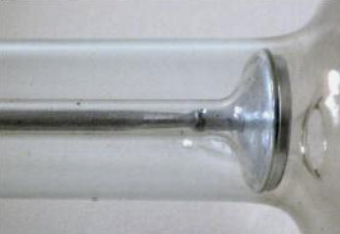

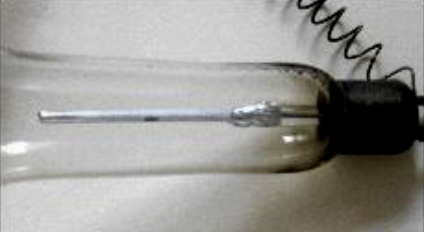
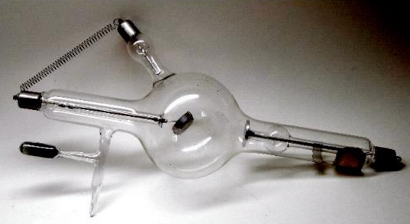

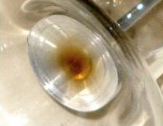
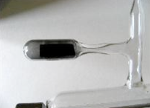

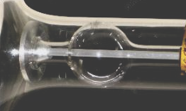
This is a glass-backed aluminium cathode & Aluminium rod anode.
The Bulbar Focus tube dates back probably to the early decades of the 20th Century. It is 11” (27 cm) long with a 3.5” (8 cm) bulb.
Of unknown make, it features an aluminum rod anode, a concave aluminum cathode, a round thin platinum target, embedded in the anti-cathode and held in place by 4 small metal claws.
It doesn’t have a regeneration device, but there is an external connection between the anode and the anti-cathode.
Note the glass backing of the cathode cup, in continuity with the thin glass sleeve around the stem of the cathode, offering a perfect fit and a stable position of the cathode structure. Note also the glass sleeving around the anti-cathode stem.
Similar tubes were described “for use with static machines and induction coils producing a spark discharge 8 to 10 cms long, and are especially suited to the needs of the average educational laboratory….The penetration of the X-rays produced is sufficient for viewing the bones of the hand and wrist….”
In this tube, and other focus tubes, the anti-cathode lies at a small distance beyond the focal point of the electron beam. Unlike light rays which diverge after their focal point, the electron beam emitted by the concave cathode, after coming to focus, travels for a certain distance in a parallel, pencil-like beam, making the position of the target uncritical.